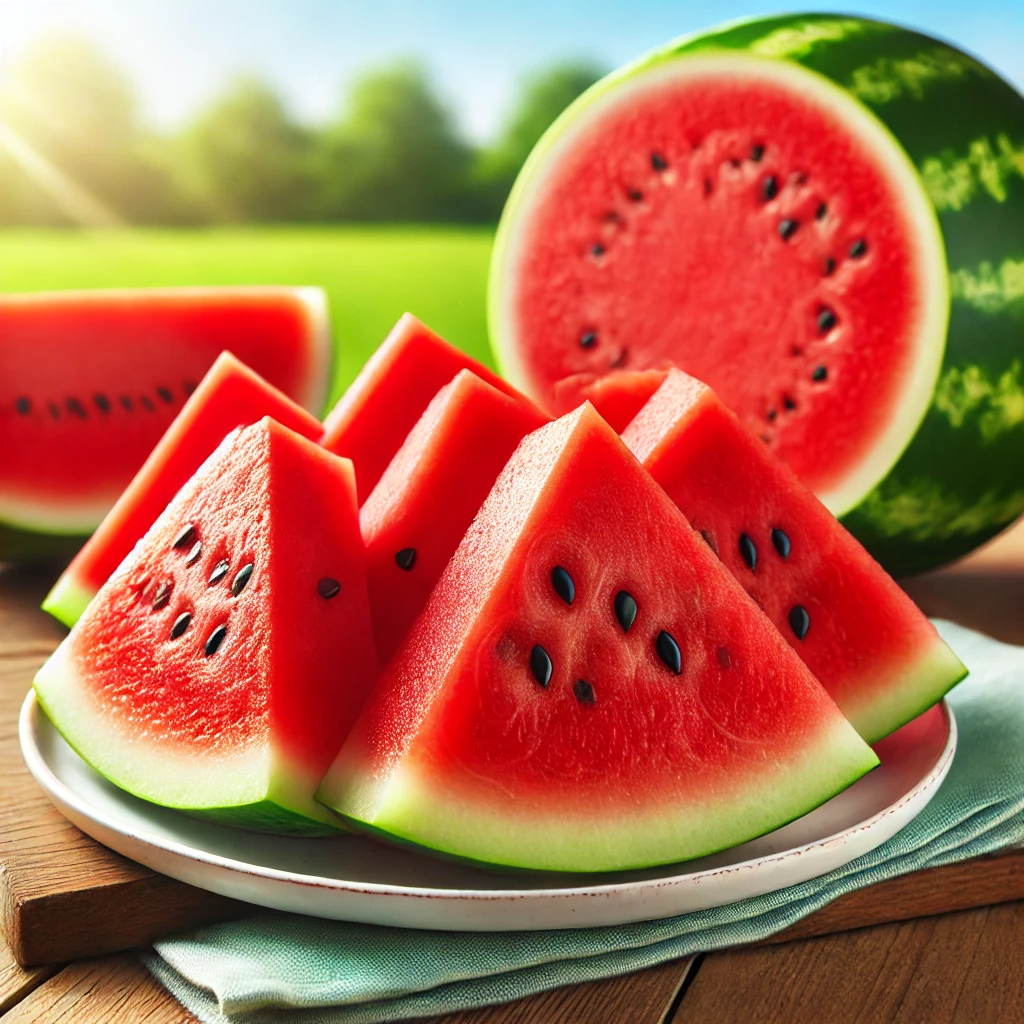How to Pick the Sweetest Watermelon in Prime Season

August is here, and that means it’s prime watermelon season! There’s nothing quite like the refreshing, juicy sweetness of a perfectly ripe watermelon on a hot summer day. But with so many watermelons to choose from, how do you ensure you’re picking the sweetest one? Here are some tips to help you select a watermelon that will be the star of your summer picnics and backyard barbecues.
1. Look for the Field Spot
The field spot is a creamy, yellowish spot on the watermelon where it rested on the ground. This spot is a good indicator of ripeness. The darker and more yellow the field spot, the longer the watermelon was allowed to ripen on the vine. Avoid watermelons with a white or greenish field spot, as this suggests the fruit was picked too early and may not be as sweet.
2. Check the Webbing
Webbing, or sugar lines, are brown, web-like scars on the watermelon. These lines are formed when bees pollinate the flower, and the sugar content of the fruit increases. A watermelon with more webbing is likely to be sweeter. While the webbing might make the watermelon look less attractive, it’s a sign that the fruit inside is deliciously sweet.
3. Tap for a Deep Sound
Another classic method for selecting a watermelon is the tap test. Give the watermelon a firm tap with your knuckles and listen to the sound it makes. A ripe watermelon will produce a deep, hollow sound, indicating that the flesh is dense and full of water. If the sound is dull or flat, the watermelon might be overripe or underripe.
4. Feel the Weight
Pick up the watermelon and compare its weight to others of similar size. A ripe watermelon should feel heavy for its size, as it’s filled with water. A heavier watermelon indicates juiciness, which is often associated with sweetness. If it feels light, it might be dried out and less flavorful.
5. Examine the Shape
The shape of a watermelon can also give clues about its quality. Uniform, symmetrical watermelons are typically the best choice. Irregularities in shape, such as lumps or flat sides, can be signs of inconsistent watering or poor growing conditions, which can affect the taste and texture of the fruit.
6. Inspect the Color and Rind
A ripe watermelon will have a deep green color with a slight sheen. The rind should be relatively smooth and firm. Avoid watermelons with dull or faded colors, as these are likely past their prime. Additionally, the skin should not be too shiny, as this can indicate underripeness.
7. Consider the Size
While bigger isn’t always better, medium-sized watermelons tend to offer the best balance of sweetness and texture. Oversized watermelons can sometimes be watery and less flavorful, while smaller ones might not have had enough time to develop their full sweetness.
Enjoying Your Perfect Watermelon
Once you’ve picked the perfect watermelon, it’s time to enjoy it! Store your watermelon in a cool place and refrigerate it once cut. Watermelon can be enjoyed in a variety of ways—sliced, cubed, or blended into smoothies. You can also get creative and add watermelon to salads, salsas, or even grill it for a unique treat.
Conclusion
Selecting the perfect watermelon might seem daunting, but with these tips, you’ll be a pro in no time. Remember to look for a dark field spot, check the webbing, tap for a deep sound, feel the weight, examine the shape, inspect the color, and consider the size. Happy watermelon season, and may your August be filled with the sweetest, juiciest watermelons yet!
